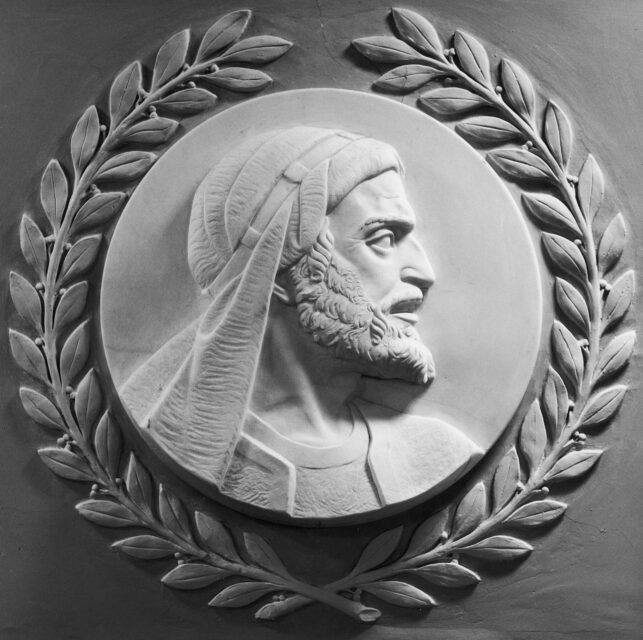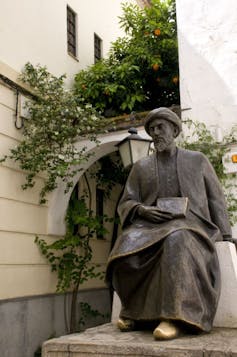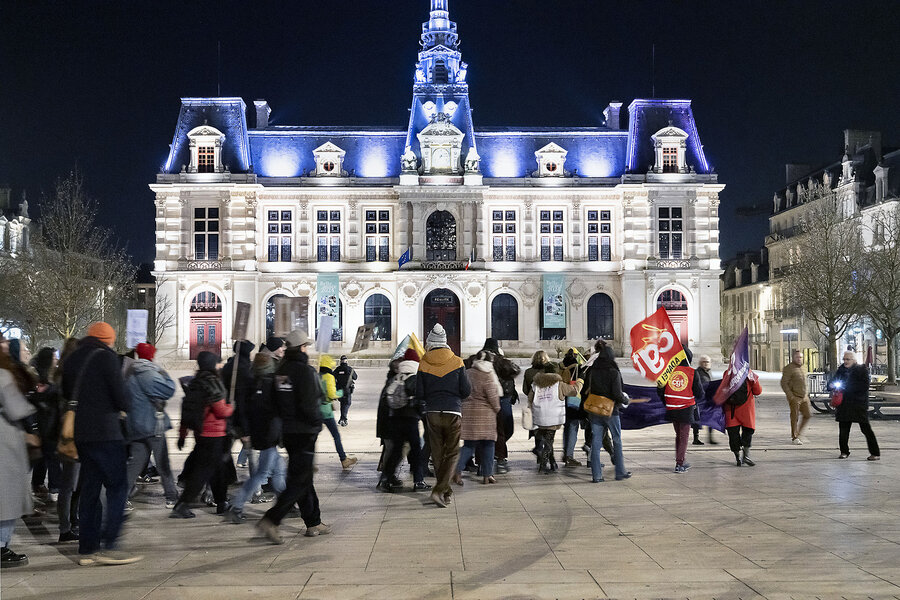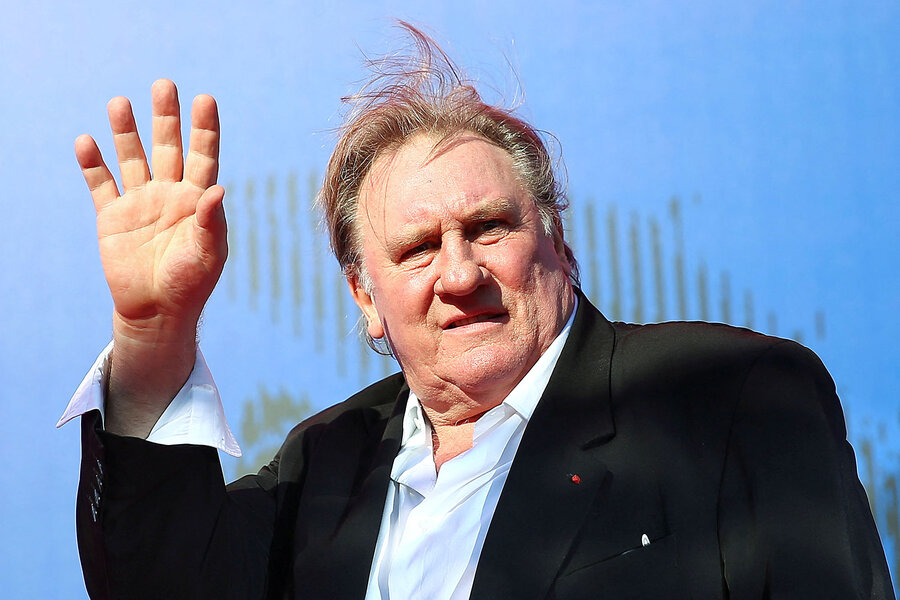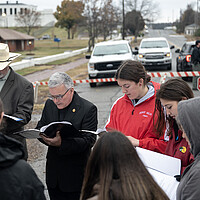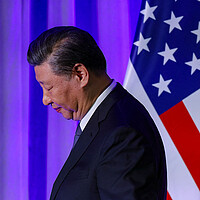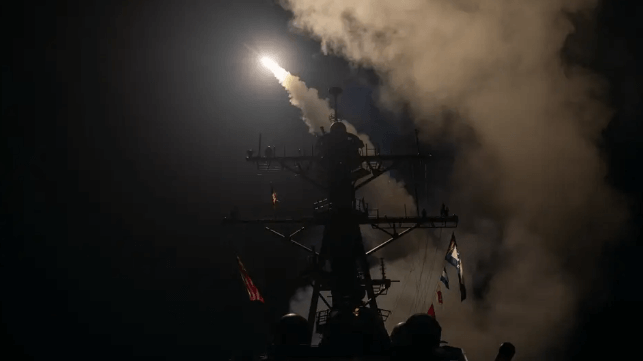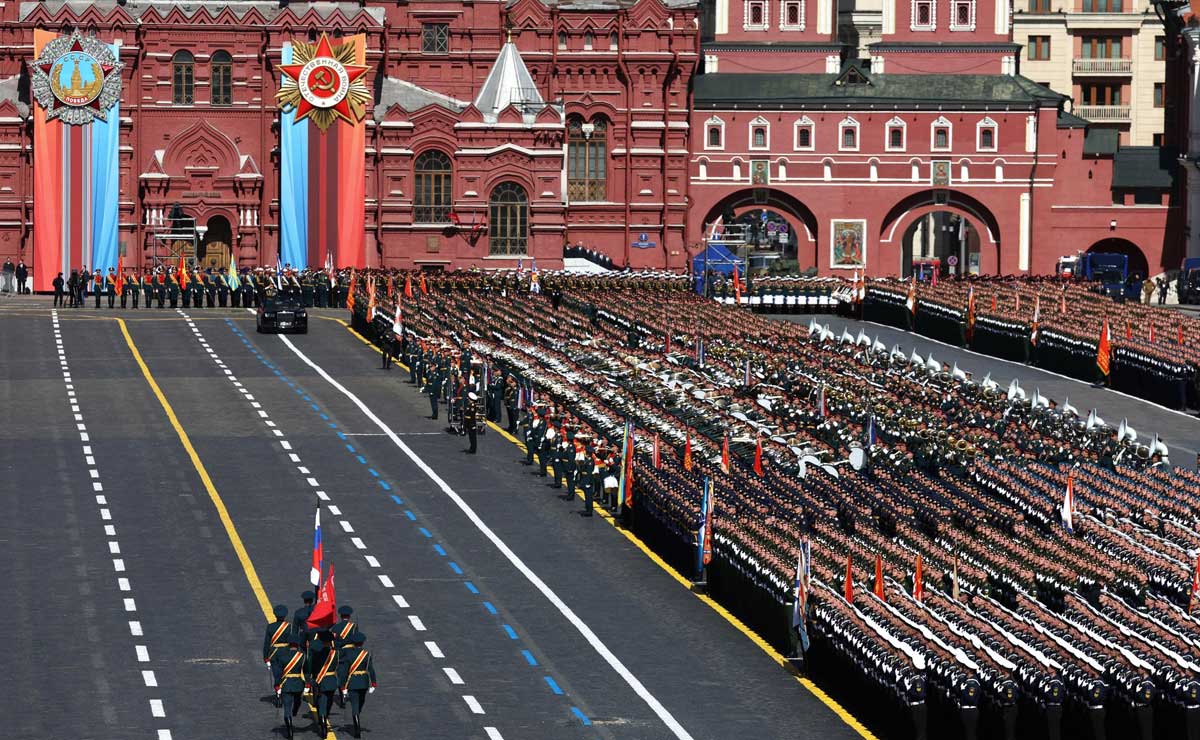We will destroy everything not Jewish.
— Theodore Herzl [1]
We have no solution, you shall continue to live like dogs, and whoever wishes may leave, and we will see where this process leads . . . . You Palestinians, as a nation, don’t want us today, but we’ll change your attitude by forcing our presence on you.
— Israeli Defense Minister Moshe Dayan [2]
The common denominator amongst all the American peace efforts is their abysmal failure.
— Cheryl A. Rubenberg [3]
USrael’s disgraceful conduct in Gaza goes on, and on and on. Leveling hospitals, shooting children in the head; gunning down a surgeon at the operating table, using an emergency call from a little girl trapped in a car with the corpses of family members to lure two rescue workers to her, then killing all three; systematically killing Palestinian journalists reporting on the slaughter; promising to save three premature babies at a hospital under forced evacuation, then leaving them to slowly die and be devoured by dogs; singing in chorus of the joy of exterminating Arabs; cheering the blocking of food aid to starving Gazans; killing entire families, inducing a Palestinian boy to lay down in the road hoping someone would run over him and end his misery; this is but a small sampling of the consequences of trapping over a million Gazans in the southern half of a 125-square-mile concentration camp without food, shelter, or sanitation, then methodically shooting and bombing them while thousands of their relatives decompose under expanding mountains of rubble.
Depravity on this scale will not magically disappear by establishing a cease fire and holding peace talks, as urgently necessary as both those preliminaries are. Only relentless popular pressure on the U.S. government to force it to deny Israel the means to subjugate and murder Palestinians can even hope to lead to de-nazification of the Jewish state, without which real peace can never be achieved. Keep in mind that in the midst of the current wholesale slaughter a large majority of Israelis think Netanyahu isn’t using enough violence.
Cease fires we have had before, and peace agreements, too, but they didn’t solve the underlying conflict because addressing the absence of Palestinian national rights – the heart of the Palestine conflict – is taboo.
Because of this taboo, massacres of Palestinians are a feature, not a bug, of Zionist ideology, and have stained Israel’s history from before the state was even formed.
Only the scale of the current Gaza slaughter sets it apart.
In June of 1982, for example, Israel invaded Lebanon on a surge of Pentagon arms shipments, seeking to disperse the Palestine Liberation Organization (the Hamas of its day) and poison its relations with the local population while destroying its political and military structures. Tens of thousands of civilians died as the IDF carved up the country in alliance with Christian fascist militias.
While claiming to stand tall for human rights, Washington kept arms and money flowing in support of Israel’s occupation of not just Palestine, but Syria and Lebanon as well.
Lebanon was savagely pounded, leaving people roaming the wreckage of Beirut in clouds of flies, terror in their eyes, their clothes reduced to rags. Mothers howled, orphans sobbed, and the stench of rotting corpses filled the air.
Cluster bombs leveled whole blocks. White phosphorous burned people alive. Palestinian refugee camps were blasted to rubble, left pockmarked with blackened craters that filled with dead bodies and other debris. An officer in the U.N. peace-keeping force swept aside by the Israeli attack on Rashidiyeh said, “It was like shooting sparrows with a cannon.” Asked why houses containing women and children were being bombarded and bulldozed, an Israeli army officer explained that, “they are all terrorists.”
Surrounded by tanks, gunshots, and hysteria, one hundred thousand people were left without shelter or food, roaming through piles of wreckage. Blindfolded men, handcuffed with plastic bonds, were marched away to concentration camps where they were tortured, humiliated, and murdered. Their families were turned over to Phalangist patrols and Haddad forces (Israeli allies), who torched homes and beat people indiscriminately.
At the United Nations, the United States gave its customary blessing to Israeli savagery, vetoing a Security Council resolution condemning Israel.
Much impressed by Israel’s “purity of arms, The New York Times saluted the “liberation” of Lebanon.
But it was a macabre “liberation.” After three months of relentless attack, the southern half of the country lay in ruins. Even President Reagan, as ardent a fan of Israel as any of his predecessors in the Oval Office, couldn’t stomach more killing, and called Israeli Prime Minister Menachem Begin to stop the “holocaust.” Offended at the president’s use of this word, Begin nevertheless halted the bombardment immediately.
An agreement between Israel, the U.S. and the PLO was signed with security guarantees for the Palestinians. Yasser Arafat and his PLO fighters left for Tunis. On September 16, in defiance of the cease fire, Ariel Sharon’s army circled the Palestinian refugee camps of Sabra and Shatila. Israeli soldiers set up checkpoints and allowed truckloads of their Phalange and Haddad allies into the Palestinian camps. The Phalangists came with old scores to settle and a long list of atrocities against Palestinians already to their credit. The Haddad forces acted as part of the Israeli Army and operated under its command.
Perched on rooftops, Israeli soldiers watched through binoculars during the day and lit up the sky with flares at night, guiding the soldiers as they moved from shelter to shelter in the camps slaughtering the defenseless refugees. In mid-massacre, Israeli Chief of Staff Rafael Eitan congratulated the Phalangist command for having “carried out good work,” offered a bulldozer for scooping up corpses, and authorized the killers to remain in the camp twelve more hours. [4]
On September 18 war correspondent Robert Fisk entered the camps and described what he found there:
Down every alleyway there were corpses – women, young men, babies and grandparents – lying together in lazy and terrible profusion where they had been killed or machine-gunned to death. . . In the panic and hatred of battle, tens of thousands had been killed in this country. But these people, hundreds of them, had been shot down unarmed . . . these were women lying in houses with their skirts torn up to their waists and their legs wide apart, children with their throats cut, rows of young men shot in the back after being lined up at an execution wall. There were babies – blackened babies because they had been slaughtered more than 24 hours earlier and their small bodies were already in a state of decomposition – tossed into rubbish heaps alongside discarded U.S. Army ration tins, Israeli army medical equipment, and empty bottles of whiskey.
. . . Down a laneway to our right, no more than 50 yards from the entrance, there lay a pile of corpses. There were more than a dozen of them, young men whose arms and legs had been wrapped around each other in the agony of death. All had been shot at point-blank range . . . One had been castrated . . . The youngest was only 12 or 13 years old.” [5]
Such were the results of Israel exercising its “right to self-defense,” just as the wholesale slaughter and starvation of Gazans forty-two years later is rationalized on the same grounds.
The moral of the story is that no matter how blindingly obvious its crimes are Israel is never guilty of anything because . . . the Holocaust.
Forty-seven years ago the London Sunday Times reported that Israel routinely tortures Palestinians, a devastating revelation at the time. The scope of the torture, said the Times, was so broad that it implicated “all of Israel’s security forces,” and was so “systematic that it [could not] be dismissed as a handful of ‘rogue cops’ exceeding orders.”
Among the prisoner experiences detailed by the Times’ Insight team were being beaten and kicked, being set upon by dogs, having one’s testicles squeezed, having a ball-point pen refill shoved into one’s penis, or being raped with a stick and left bleeding from the mouth and face and anus.
Israel categorically denied the charges, but refused to rebut, diverting to side issues and attacking Israeli lawyers who stooped so low as to defend Arabs. Seth Kaplan in the staunchly liberal The New Republic rose in defense of Israeli torture, arguing that how a government treats its people “is not susceptible to simple absolutism, such as the outright condemnation of torture. One may have to use extreme measures – call them ‘torture’ – to deal with a terrorist movement whose steady tactic is the taking of human life.” [6] Of course, every state in the world practicing administrative torture routinely claimed it was fighting “terrorists,” an infinitely elastic designation in the hands of national security officials.
So what supposedly made Palestinians “terrorists”? Mainly, that they resisted Israel’s steady tactic of robbing, swindling, torturing, and murdering all those who had been living in Palestine long before Zionism even appeared on the scene. But Israel simply couldn’t publicly admit that Palestine was not what it told the world it was – a land without a people for a people without a land. It had to keep torturing and killing Palestinians to induce them to vacate the land, but it could never admit this. At the end of 1996, when the Israeli Supreme Court authorized the torture of Palestinian prisoners, the justices called it “moderate physical pressure,” which sounds more like massage than torture. [7]
Two major Middle East peace agreements have been negotiated entirely under the prejudiced assumption that Palestinians are terrorists to be neutralized, not an oppressed people entitled to its rights. In neither Camp David nor Oslo was there any indication that Palestinian grievances were to be seriously considered, much less honestly dealt with. Had the obvious issues been faced with courage then, Gazans wouldn’t be getting slaughtered now. But they weren’t, an outcome that could have been foreseen just by looking at the people who produced the agreements.
The Camp David Treaty was negotiated by Egyptian President Anwar Sadat, Israeli Prime Minister Menachem Begin, and U.S. President Jimmy Carter.
Sadat was a former Nazi collaborator whose idol was the Shah of Iran, a U.S. client then moving at break-neck speed to Westernize the country, in the process laying down a human rights record so appalling that Amnesty International characterized it as “beyond belief.” He was shortly overthrown by the Iranian Revolution of 1979.
The year before Camp David Sadat had made his “sacred mission” to Jerusalem to speak to the Knesset, opening the way for peace. But he complied with Israeli Foreign Minister Moshe Dayan’s instructions to delete references to the PLO, and he never got off his knees after that. At Camp David he threw himself on the goodwill of the United States, striving for an agreement so good for Israel that Begin would invite condemnation should he dare to reject it. Dismissed as a traitor and a fool throughout the Arab world, he was assassinated three years later.
Former head of the underground terrorist group Irgun, Israeli Prime Minister Menachem Begin was proud of his role in blowing up 95 British and Arabs in the King David Hotel in 1946, as well as the slaughter of over two-hundred Arab women, children and old men at Deir Yassin in 1948. In WWII, the Irgun had offered to support the Nazis against the British. One of Begin’s first acts when he became Israeli Prime Minister was to issue a postage stamp honoring Abraham Stern, whose group made the proposal. [8]
The last thing one could reasonably expect out of Prime Minister Begin’s cabinet was peace. His military junta included five generals who maintained cozy relations with apartheid South Africa and the blood-soaked dictators Augusto Pinochet and Anastasio Somoza.
As for Begin’s territorial ambitions, they were expansive, to say the least. The former Irgun commander had been elected on a platform calling for the annexation of the West Bank and the East Bank of the Jordan River, a goal that the Likud Party has never renounced. He regarded the West Bank and Gaza not as occupied but as liberated – from the indigenous Arabs to whom he felt they didn’t rightfully belong, and he called the land “Judea and Samaria,” Biblical names for God’s gift to the Jews. He openly regarded the Palestinians as Israel’s coolies, corralling them into Bantustans even as he promised them full autonomy, which he defined mystically as self-rule for people, but not for the land on which they lived. [9]
The key figure at Camp David, of course, was U.S. President Jimmy Carter, a fundamentalist Baptist and supposedly a neutral mediator between Begin and Sadat. He confessed to having an “affinity for Israel” based on its custodianship of the Holy Land, and regarded it as “compatible with the teachings of the Bible, hence ordained by God.” Ordained by God! He had “no strong feelings about the Arab countries,” but condemned the “terrorist PLO.” Begin he described implausibly as a man of integrity and honor.
Carter instructed Sadat that unless his proposals were patently fair to Israel, which regarded Arabs as subhuman, Begin would justifiably reject them. When Egypt’s opening proposals requested compensation for Israeli use of land and oil wells in the occupied Sinai, free immigration to the West Bank, Israeli withdrawal from the illegally occupied territories (including East Jerusalem), and a Palestinian state, Carter was despondent at the “extremely harsh” recommendations. [10] Any treatment of Palestinians other than as anonymous refugees to be absorbed and pacified in colonial structures was apparently unimaginable extremism.
At the time, the PLO was the sole legitimate representative of the Palestinian people, and its inclusion in negotiations was the only possible basis for establishing Palestinian national rights and reaching real peace. Nevertheless, Carter’s national security advisor Zbigniew Brzezinski summed up the U.S. stance at Camp David as “bye-bye PLO.” The Palestinians’ nationalist aspirations were summarily dismissed, and a solution for the Occupied Territories was postponed until future “autonomy talks,” to which the PLO would not be invited. This doomed any prospect of peace.
Unsurprisingly, Camp David’s imagined Palestinian “autonomy” was a substitute for national liberation in the Accords, and was fundamentally colonial. Israel was allowed to retain economic and political power over the West Bank and Gaza, and the Israeli Defense Forces were permitted to indefinitely remain. The Palestinians were essentially granted municipal authority (to pick up the garbage?) provided it didn’t threaten Israeli “security.” Prime Minister Begin openly declared that he would never allow a Palestinian state on the West Bank.
It’s hard to improve upon the summation of Camp David provided by Fayez Sayegh, founder of the Palestine Research Center:
A fraction of the Palestinian people (under one-third of the whole) is promised a fraction of its rights (not including the national right to self-determination and statehood) in a fraction of its homeland (less than one-fifth of the area of the whole); and this promise is to be fulfilled several years from now, through a step-by-step process in which Israel is to exercise a decisive veto power over any agreement. Beyond that, the vast majority of Palestinians is condemned to permanent loss of its Palestinian national identity, to permanent exile and statelessness, to permanent separation from one another and from Palestine – to a life without national hope or meaning. [11]
Nevertheless, the United States applauded what it somehow construed as the birth of peace in the Middle East, while Israel proceeded to “annex” Jerusalem and the Golan Heights, tattoo the Occupied Territories with Jewish settlements, carve up southern Lebanon, attack Iraq, and bomb Palestinian refugee camps. [12]
None of this was a surprise. According to Israeli strategic analyst Avner Yaniv, the effect of Camp David’s removing of Egypt from the Arab military alliance was that “Israel would be free to sustain military operations against the PLO in Lebanon as well as settlement activity on the West Bank.” [13]
Five years after Israel had reduced southern Lebanon to rubble Gaza rose in rebellion (the first intifada), and six years after that came the Oslo Accords, with the White House announcing triumphantly for the second time that lasting Middle East peace was at hand. But once again there was no peace. In accordance with long-standing U.S.-Israeli rejectionism the Oslo Accords called for the incorporation of Palestinian lands in a permanent colonial structure administered by Israel.
In other words, after more than seventy years of sacrifice and popular struggle for their national rights, the Palestinians were triumphantly handed a micro-state with no power. A toothless “Palestinian Authority” was set up in the West Bank.
Once again, Israel remained in possession of everything that counted: East Jerusalem, the settlements, the economy, the land, water, sovereignty, and “security.” The Oslo settlement was based on UN Resolution 242, which only recognized Palestinians as stateless refugees, not as a people possessed of national rights.
Israel made no commitment to giving up its violence or compensating the Palestinians for 45 years of conquest and dispossession. Yasir Arafat renounced all nationalist aspirations and discarded Palestinian rights, including the right to resist oppression. He accepted responsibility for guaranteeing Israeli security, turning his people into police for their occupiers.
The Palestinians were granted nothing more than “limited autonomy,” with no guarantee of Palestinian security, no Palestinian sovereignty, and no autonomous economy. Israeli companies were to set up sweatshops in the Occupied Territories and Palestinians were to continue supplying the $6-a-day labor. After years of granting concessions to Israel, they were asked to wait three to five more years until “final status” talks could determine what Israel’s vague references to “improvements” actually meant.
For the majority of Palestinians living in the Diaspora, this represented the final act of robbery, nullifying years of promises from the UN, Arab governments, and the PLO itself.
At the celebration of the Oslo Accords on the White House lawn, Arafat, the conquered, thanked everyone for the agreement suspending most of his people’s rights, and delivered an emotionally sterile speech as though he were reading out of a phone book. He barely mentioned the Palestinians.
Yitzak Rabin, the conqueror, gave a long speech detailing Israeli anguish, loss, and suffering involved in the conquest. He promised that Israel would concede nothing on sovereignty and would keep the River Jordan, the boundaries with Egypt and Jordan, the sea, the land between Gaza and Jericho, Jerusalem, the roads, and the settlements. He did not concede that Israel was, or ever had been, an occupying power. He made no commitment to dismantling the maze of racist laws and repressive fixtures of the Occupation. He said nothing about the thousands of Palestinians rotting in Israeli jails. He expressed not a twinge of remorse for four-and-a-half decades of ethnic cleansing and lies. [14]
So the occupation of Palestine continued for years more, severely restricting Palestinian movement, increasing Jewish colonization of Arab land, and intensifying bureaucratic harassment. On September 28, 2000, Ariel Sharon and a thousand Israeli soldiers touched off the second intifada by invading the Al Aqsa mosque site in Arab Jerusalem. The next day Prime Minister Ehud Barak ordered riot police to storm the compound where 20,000 Palestinians were praying. Rocks were thrown and the police opened fire, killing seven and wounding 220. Within days President Clinton dispatched the largest shipment of attack helicopters to Israel in a decade.
Though portrayed by Israel apologists as extraordinarily generous towards the Palestinians, Prime Minister Ehud Barak never dismantled a settlement or freed a Palestinian prisoner during his entire 18 months in office. Like his predecessors, he refused to compromise on settlements, borders, refugee rights, and Jerusalem. According to Robert Malley, special assistant for Arab-Israeli affairs in the Clinton administration, it is a myth that Israel had offered to meet “most if not all of the Palestinians’ legitimate aspirations,” and equally a myth that the “Palestinians made no concession of their own.” In fact, Palestinians expressed willingness to accommodate Jewish settlements on the West Bank, Israeli sovereignty over Jewish neighborhoods in East Jerusalem, and a limit on repatriation of Palestinian exiles, though all of them were entitled to return. Malley stated that “no other Arab party that has negotiated with Israel . . . ever came close to even considering such compromises.”
Meanwhile, Israel offered nothing and demanded surrender, just as it always had.
According to Israeli military analyst Ze’ev Schiff, the Palestinians were left with three options: (1) agree to the expanding Occupation, (2) set up Bantustans, or (3) launch an uprising.
Palestinians chose to fight, and Israel pounded the nearly defenseless civilian population with helicopter gunships, F-16s, tanks, missiles, and machine guns. While systematically assassinating Palestinian leaders, Israel cried “immoral” when its victims turned their bodies into weapons in horrific suicide bombings at supermarkets, restaurants, pool halls, and discotheques. Israeli propaganda blamed “hate teaching” by the PLO, but the real hate teacher was the racist ideology that defined Palestinians as “beasts walking on two legs” and “cockroaches in a bottle,” among other terms of endearment popular with Israeli leaders. [15] This swelled the ranks of the Al Aqsa Martyrs Brigade with volunteers who had lost close relatives to the Israeli military.
Amidst the firestorm of moral indignation occasioned by the suicide attacks, Israel never considered negotiating in good faith to resolve the longstanding conflict, and the United States applied no pressure to make them do so. Following in the footsteps of a long line of predecessors, President George W. Bush heaped arms and aid on Israel, vetoed UN resolutions calling for observers in the Occupied Territories, and continued funding the ever-expanding Jewish settlements. With the entire world recoiling in shocked outrage at Israel’s pulverizing of the West Bank, he declared Ariel Sharon “a man of peace.” [16]
Post-Oslo the stealing of land and dynamiting of Palestinian homes continued with the same justification as before: Jewish land was redeemed, Arab land was unredeemed. By the end of the twentieth-century, over 80% of Palestine no longer belonged to Palestinian Arabs. Under Clinton-Barak settlement construction had accelerated dramatically and Jews received nearly seven times as much water as Arabs in the West Bank and Gaza. Meanwhile, three hundred miles of Jews-only highways and bypass roads integrated the settlements into Israel proper while dividing Palestinian areas into enclaves of misery completely cut-off from the wider world.
Increasing numbers of Israeli Arabs joined with the Palestinians in the Occupied Territories to protest Jewish supremacy rooted in nationality rights granting Jews exclusive use of land, better access to jobs, special treatment in getting loans, and preferences for college admission, among other unearned advantages. Military service brought even more benefits, from which Palestinians were excluded. [17]
Founded as a haven for Jews, Israel had become the most dangerous place in the world for them to live. The constant war on Palestinians that made this so was still described as self-defense, and the crushing of their national culture was still the goal of “peace.” Orwell would have felt like an amateur.
Whatever differences President Biden and Prime Minister Netanyahu may be having regarding tactics and media sound bites, the commitment they share is to preserving the festering boil of apartheid Israel, rooted in the conviction that Jews are a master race of chosen people destined to scrub the Holy Land of unsightly Arabs and rule over Greater Israel forever.
The stench of death is its constant gift to the world.
FOOTNOTES:
[1] Joel Kovel, Overcoming Zionism, (Pluto, 2007) p. 224
[5] Robert Fisk is quoted from his book Pity The Nation in Susan Abulhawa, Mornings In Jenin, (Bloomsbury, 2010) pps. 224-6. Abulhawa is a novelist, but quotes verbatim passages from Pity The Nation.
[6] Noam Chomsky, Towards A New Cold War, (Pantheon, 1973-1982) p. 454n., Alfred Lilienthal, The Zionist Connection, (Dodd Mead, 1978) pps. 178-84.
[7] Eduardo Galeano, Upside Down – A Primer For The Looking Glass World, (Henry Holt, 1998), p. 88.
[8] Alfred Lilienthal, The Zionist Connection, (Dodd Mead, 1978) p. 153.
[9] Edward Said, The Question of Palestine, (Vintage, 1979) pps. 14-15, 44, 57, 138, 195, 204, 206-7; Alfred Lilienthal, The Zionist Connection, (Dodd Mead, 1978) pps. 144, 191, 279, 351, 398, 683. Noam Chomsky, The Fateful Triangle, (South End, 1983), p. 95n.; Jimmy Carter, Keeping Faith: Memoirs of a President, (Bantam, 1982) pps. 334, 347)
[10] Jimmy Carter, Keeping Faith: Memoirs of a President, (Bantam, 1982) pps. 274-5, 338-40; Alfred Lilienthal, The Zionist Connection, (Dodd Mead, 1978) p. 651.
[11] Edward Said, The Question of Palestine, (Vintage, 1979), p. 212
[14] Edward Said, The Pen and the Sword, (Common Courage, 1994) p. 110; Edward Said, The Politics of Dispossession, (Chatto and Windus, 1994) p. xxxiv, xxxv-xxxvii; Christopher Hitchens in Edward Said, Peace and Its Discontents, (Random House, 1993) p. 3.
[16] Stephen Shalom, “The Israel-Palestine Crisis,” Z Magazine, May 2002; Edward Said, “The Desertion of Arafat,” New Left Review, September-October 2001; Rezeq Faraj, “Israel and Hamas,” Covert Action Information Bulletin, Winter 2001; Rania Masri, “The Al Aqsa Intifada – The consequence of Israel’s 34-year occupation”; Noam Chomsky, International Socialist Review, November-December 2001.
[17] Max Elbaum, interview with Phyllis Bennis, “For Jews Only: Racism Inside Israel,” ColorLines, December 15, 2000; Edward Herman, “Israel’s Approved Ethnic Cleansing,” Z Magazine, April 2001; Rene Backmann, A Wall In Palestine, (Picador, 2010), p. 170.
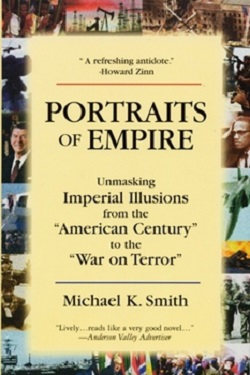
Michael Smith is the author of "Portraits of Empire." He co-blogs with Frank Scott at www.legalienate.blogspot.com Read other articles by Michael.